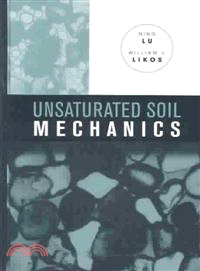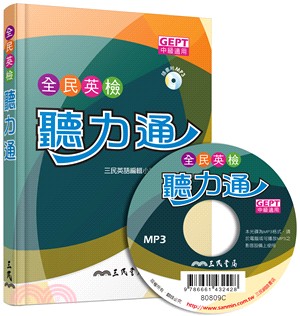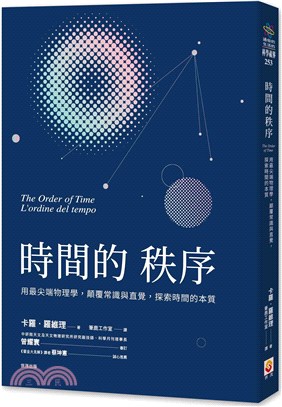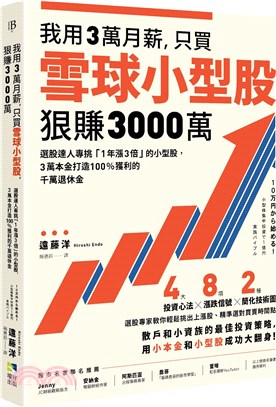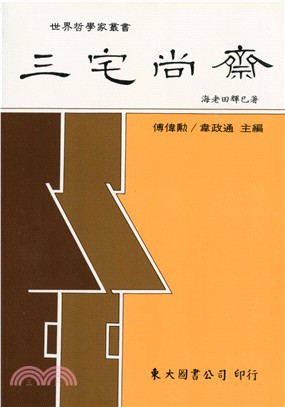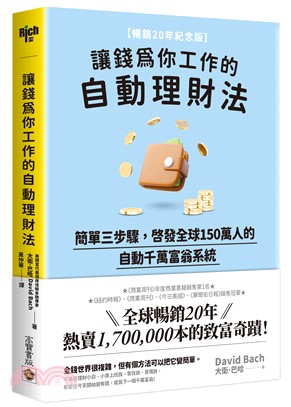商品簡介
* Offers extensive sample problems with an accompanying solutions manual.
* Brings together the rapid advances in research in unsaturated soil mechanics in one focused volume.
* Covers advances in effective stress and suction and hydraulic conductivity measurement.
作者簡介
WILLIAM J. LIKOS, PhD, is Assistant Professor of Civil and Environmental Engineering at the University of Missouri—Columbia, where he teaches courses in soil mechanics and soil behavior. He is a former geotechnical engineer with the U.S. Geological Survey. He is the author of numerous papers regarding unsaturated and expansive soil behavior, an editorial board member for the Geotechnical Testing Journal, and a member of ASCE and the Clay Minerals Society.
目次
PREFACE.
SYMBOLS.
INTRODUCTION.
1 STATE OF UNSATURATED SOIL.
1.1 Unsaturated Soil Phenomena.
1.1.1 Definition of Unsaturated Soil Mechanics.
1.1.2 Interdisciplinary Nature of Unsaturated Soil Mechanics.
1.1.3 Classification of Unsaturated Soil Phenomena.
1.2 Scope and Organization of Book.
1.2.1 Chapter Structure.
1.2.2 Geomechanics and Geo-environmental Tracks.
1.3 Unsaturated Soil in Nature and Practice.
1.3.1 Unsaturated Soil in Hydrologic Cycle.
1.3.2 Global Extent of Climatic Factors.
1.3.3 Unsaturated Zone and Soil Formation.
1.3.4 Unsaturated Soil in Engineering Practice.
1.4 Moisture, Pore Pressure, and Stress Profiles.
1.4.1 Stress in the Unsaturated State.
1.4.2 Saturated Moisture and Stress Profiles: Conceptual Illustration.
1.4.3 Unsaturated Moisture and Stress Profiles: Conceptual Illustration.
1.4.4 Illustrative Stress Analysis.
1.5 State Variables, Material Variables, and Constitutive Laws.
1.5.1 Phenomena Prediction.
1.5.2 Head as a State Variable.
1.5.3 Effective Stress as a State Variable.
1.5.4 Net Normal Stresses as State Variables.
1.6 Suction and Potential of Soil Water.
1.6.1 Total Soil Suction.
1.6.2 Pore Water Potential.
1.6.3 Units of Soil Suction.
1.6.4 Suction Regimes and the Soil-Water Characteristic Curve.
Problems.
I FUNDAMENTAL PRINCIPLES.
2 MATERIAL VARIABLES.
2.1 Physical Properties of Air and Water.
2.1.1 Unsaturated Soil as a Multiphase System.
2.1.2 Density of Dry Air.
2.1.3 Density of Water.
2.1.4 Viscosity of Air and Water.
2.1.5 Flow Regimes.
2.2 Partial Pressure and Relative Humidity.
2.2.1 Relative Humidity in Unsaturated Soil Mechanics.
2.2.2 Composition and Partial Pressure of Air.
2.2.3 Equilibrium between Free Water and Air.
2.2.4 Equilibrium between Pore Water and Air.
2.2.5 Relative Humidity.
2.2.6 Dew Point.
2.3 Density of Moist Air.
2.3.1 Effect of Water Vapor on Density of Air.
2.3.2 Formulation for Moist Air Density.
2.4 Surface Tension.
2.4.1 Origin of Surface Tension.
2.4.2 Pressure Drop across an Air-Water Interface.
2.5 Cavitation of Water.
2.5.1 Cavitation and Boiling.
2.5.2 Hydrostatic Atmospheric Pressure.
2.5.3 Cavitation Pressure.
Problems.
3 INTERFACIAL EQUILIBRIUM.
3.1 Solubility of Air in Water.
3.1.1 Henry’s Law.
3.1.2 Temperature Dependence.
3.1.3 Volumetric Coefficient of Solubility.
3.1.4 Henry’s Law Constant and Volumetric Coefficient of Solubility.
3.1.5 Vapor Component Correction.
3.1.6 Mass Coefficient of Solubility.
3.2 Air-Water-Solid Interface.
3.2.1 Equilibrium between Two Water Drops.
3.2.2 Equilibrium at an Air-Water-Solid Interface.
3.2.3 Contact Angle.
3.2.4 Air-Water-Solid Interface in Unsaturated Soil.
3.3 Vapor Pressure Lowering.
3.3.1 Implications of Kelvin’s Equation.
3.3.2 Derivation of Kelvin’s Equation.
3.3.3 Capillary Condensation.
3.4 Soil-Water Characteristic Curve.
3.4.1 Soil Suction and Soil Water.
3.4.2 Capillary Tube Model.
3.4.3 Contacting Sphere Model.
3.4.4 Concluding Remarks.
Problems.
4 CAPILLARITY.
4.1 Young-Laplace Equation.
4.1.1 Three-Dimensional Meniscus.
4.1.2 Hydrostatic Equilibrium in a Capillary Tube.
4.2 Height of Capillary Rise.
4.2.1 Capillary Rise in a Tube.
4.2.2 Capillary Finger Model.
4.2.3 Capillary Rise in Idealized Soil.
4.2.4 Capillary Rise in Soil.
4.3 Rate of Capillary Rise.
4.3.1 Saturated Hydraulic Conductivity Formulation.
4.3.2 Unsaturated Hydraulic Conductivity Formulation.
4.3.3 Experimental Verification.
4.4 Capillary Pore Size Distribution.
4.4.1 Theoretical Basis.
4.4.2 Pore Geometry.
4.4.3 Computational Procedures.
4.5 Suction Stress.
4.5.1 Forces between Two Spherical Particles.
4.5.2 Pressure in the Water Lens.
4.5.3 Effective Stress due to Capillarity.
4.5.4 Effective Stress Parameter and Water Content.
Problems.
II STRESS PHENOMENA.
5 STATE OF STRESS.
5.1 Effective Stress in Unsaturated Soil.
5.1.1 Macromechanical Conceptualization.
5.1.2 Micromechanical Conceptualization.
5.1.3 Stress between Two Spherical Particles with Nonzero Contact Angle.
5.1.4 Pore Pressure Regimes.
5.2 Hysteresis.
5.2.1 Hysteresis Mechanisms.
5.2.2 Ink-Bottle Hysteresis.
5.2.3 Contact Angle Hysteresis.
5.2.4 Hysteresis in the Soil-Water Characteristic Curve.
5.2.5 Hysteresis in the Effective Stress Parameter.
5.2.6 Hysteresis in the Suction Stress Characteristic Curve.
5.3 Stress Tensor Representation.
5.3.1 Net Normal Stress, Matric Suction, and Suction Stress Tensors.
5.3.2 Stress Tensors in Unsaturated Soil: Conceptual Illustration.
5.4 Stress Control by Axis Translation.
5.4.1 Rationale for Axis Translation.
5.4.2 Equilibrium for an Air-Water-HAE System.
5.4.3 Equilibrium for an Air-Water-HAE-Soil System.
5.4.4 Characteristic Curve for HAE Material.
5.4.5 Controlled Stress Variable Testing.
5.5 Graphical Representation of Stress.
5.5.1 Net Normal Stress and Matric Suction Representation.
5.5.2 Effective Stress Representation.
Problems.
6 SHEAR STRENGTH.
6.1 Extended Mohr-Coulomb (M-C) Criterion.
6.1.1 M-C for Saturated Soil.
6.1.2 Experimental Observations of Unsaturated Shear Strength.
6.1.3 Extended M-C Criterion.
6.1.4 Extended M-C Criterion in Terms of Principal Stresses.
6.2 Shear Strength Parameters for the Extended M-C Criterion.
6.2.1 Interpretation of Triaxial Testing Results.
6.2.2 Interpretation of Direct Shear Testing Results.
6.3 Effective Stress and the M-C Criterion.
6.3.1 Nonlinearity in the Extended M-C Envelope.
6.3.2 Effective Stress Approach.
6.3.3 Measurements of X at Failure.
6.3.4 Reconciliation between Φband Xf
6.3.5 Validity of Effective Stress as a State Variable for Strength.
6.4 Shear Strength Parameters for the M-C Criterion.
6.4.1 Interpretation of Direct Shear Testing Results.
6.4.2 Interpretation of Triaxial Testing Results.
6.5 Unified Representation of Failure Envelope.
6.5.1 Capillary Cohesion as a Characteristic Function for Unsaturated Soil.
6.5.2 Determining the Magnitude of Capillary Cohesion.
6.5.3 Concluding Remarks.
Problems.
7 SUCTION AND EARTH PRESSURE PROFILES.
7.1 Steady Suction and Water Content Profiles.
7.1.1 Suction Regimes in Unsaturated Soil.
7.1.2 Analytical Solutions for Profiles of Matric Suction.
7.1.3 Hydrologic Parameters for Representative Soil Types.
7.1.4 Profiles of Matric Suction for Representative Soil Types.
7.1.5 Profiles of Water Content for Representative Soil Types.
7.2 Steady Effective Stress Parameter and Stress Profiles.
7.2.1 Profiles of the Effective Stress Parameter X.
7.2.2 Profiles of Suction Stress and Their Solution Regimes.
7.2.3 Profiles of Suction Stress for Representative Soil Types.
7.2.4 Concluding Remarks.
7.3 Earth Pressure at Rest.
7.3.1 Extended Hooke’s Law.
7.3.2 Profiles of Coefficient of Earth Pressure at Rest.
7.3.3 Depth of Cracking.
7.4 Active Earth Pressure.
7.4.1 Mohr-Coulomb Failure Criteria for Unsaturated Soil.
7.4.2 Rankine’s Active State of Failure.
7.4.3 Active Earth Pressure Profiles for Constant Suction Stress.
7.4.4 Active Earth Pressure Profiles for Variable Suction Stress.
7.4.5 Active Earth Pressure Profiles with Tension Cracks.
7.5 Passive Earth Pressure.
7.5.1 Rankine’s Passive State of Failure.
7.5.2 Passive Earth Pressure Profiles for Constant Suction Stress.
7.5.3 Passive Earth Pressure Profiles for Variable Suction Stress.
7.5.4 Concluding Remarks.
Problems.
III FLOW PHENOMENA.
8 STEADY FLOWS.
8.1 Driving Mechanisms for Water and Airflow.
8.1.1 Potential for Water Flow.
8.1.2 Mechanisms for Airflow.
8.1.3 Regimes for Pore Water Flow and Pore Airflow.
8.1.4 Steady-State Flow Law for Water.
8.2 Permeability and Hydraulic Conductivity.
8.2.1 Permeability versus Conductivity.
8.2.2 Magnitude, Variability, and Scaling Effects.
8.3 Hydraulic Conductivity Function.
8.3.1 Conceptual Model for the Hydraulic Conductivity Function.
8.3.2 Hysteresis in the Hydraulic Conductivity Function.
8.3.3 Relative Conductivity.
8.3.4 Effects of Soil Type.
8.4 Capillary Barriers.
8.4.1 Natural and Engineered Capillary Barriers.
8.4.2 Flat Capillary Barriers.
8.4.3 Dipping Capillary Barriers.
8.5 Steady Infiltration and Evaporation.
8.5.1 Horizontal Infiltration.
8.5.2 Vertical Infiltration and Evaporation.
8.6 Steady Vapor Flow.
8.6.1 Fick’s Law for Vapor Flow.
8.6.2 Temperature and Vapor Pressure Variation.
8.6.3 Vapor Density Gradient.
8.7 Steady Air Diffusion in Water.
8.7.1 Theoretical Basis.
8.7.2 Air Diffusion in an Axis Translation System.
Problems.
9 TRANSIENT FLOWS.
9.1 Principles for Pore Liquid Flow.
9.1.1 Principle of Mass Conservation.
9.1.2 Transient Saturated Flow.
9.1.3 Transient Unsaturated Flow.
9.2 Rate of Infiltration.
9.2.1 Transient Horizontal Infiltration.
9.2.2 Transient Vertical Infiltration.
9.2.3 Transient Moisture Profile for Vertical Infiltration.
9.3 Transient Suction and Moisture Profiles.
9.3.1 Importance of Transient Soil Suction and Moisture.
9.3.2 Analytical Solution of Transient Unsaturated Flow.
9.3.3 Numerical Modeling of Transient Unsaturated Flow.
9.4 Principles for Pore Gas Flow.
9.4.1 Principle of Mass Conservation for Compressible Gas.
9.4.2 Governing Equation for Pore Airflow.
9.4.3 Linearization of the Airflow Equation.
9.4.4 Sinusoidal Barometric Pressure Fluctuation.
9.5 Barometric Pumping Analysis.
9.5.1 Barometric Pumping.
9.5.2 Theoretical Framework.
9.5.3 Time Series Analysis.
9.5.4 Determining Air Permeability.
Problems.
IV MATERIAL VARIABLE MEASUREMENT AND MODELING.
10 SUCTION MEASUREMENT.
10.1 Overview of Measurement Techniques.
10.2 Tensiometers.
10.2.1 Properties of High-Air-Entry Materials.
10.2.2 Tensiometer Measurement Principles.
10.3 Axis Translation Techniques.
10.3.1 Null Tests and Pore Water Extraction Tests.
10.3.2 Pressure Plates.
10.3.3 Tempe Pressure Cells.
10.4 Electrical/Thermal Conductivity Sensors.
10.5 Humidity Measurement Techniques.
10.5.1 Total Suction and Relative Humidity.
10.5.2 Thermocouple Psychrometers.
10.5.3 Chilled-Mirror Hygrometers.
10.5.4 Polymer Resistance/Capacitance Sensors.
10.6 Humidity Control Techniques.
10.6.1 Isopiestic Humidity Control.
10.6.2 Two-Pressure Humidity Control.
10.7 Filter Paper Techniques.
10.7.1 Filter Paper Measurement Principles.
10.7.2 Calibration and Testing Procedures.
10.7.3 Accuracy, Precision, and Performance.
Problems.
11 HYDRAULIC CONDUCTIVITY MEASUREMENT.
11.1 Overview of Measurement Techniques.
11.2 Steady-State Measurement Techniques.
11.2.1 Constant-Head Method.
11.2.2 Constant-Flow Method.
11.2.3 Centrifuge Method.
11.3 Transient Measurement Techniques.
11.3.1 Hydraulic Diffusivity.
11.3.2 Horizontal Infiltration Method.
11.3.3 Outflow Methods.
11.3.4 Instantaneous Profile Methods.
Problems.
12 SUCTION AND HYDRAULIC CONDUCTIVITY MODELS.
12.1 Soil-Water Characteristic Curve Models.
12.1.1 SWCC Modeling Parameters.
12.1.2 Brooks and Corey (BC) Model.
12.1.3 van Genuchten (VG) Model.
12.1.4 Fredlund and Xing (FX) Model.
12.2 Hydraulic Conductivity Models.
12.2.1 Empirical and Macroscopic Models.
12.2.2 Statistical Models.
Problems.
REFERENCES.
INDEX.
主題書展
更多書展本週66折
您曾經瀏覽過的商品
購物須知
外文書商品之書封,為出版社提供之樣本。實際出貨商品,以出版社所提供之現有版本為主。部份書籍,因出版社供應狀況特殊,匯率將依實際狀況做調整。
無庫存之商品,在您完成訂單程序之後,將以空運的方式為你下單調貨。為了縮短等待的時間,建議您將外文書與其他商品分開下單,以獲得最快的取貨速度,平均調貨時間為1~2個月。
為了保護您的權益,「三民網路書店」提供會員七日商品鑑賞期(收到商品為起始日)。
若要辦理退貨,請在商品鑑賞期內寄回,且商品必須是全新狀態與完整包裝(商品、附件、發票、隨貨贈品等)否則恕不接受退貨。




